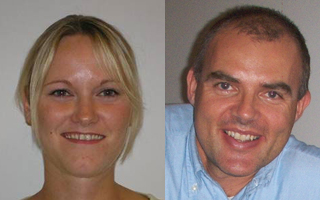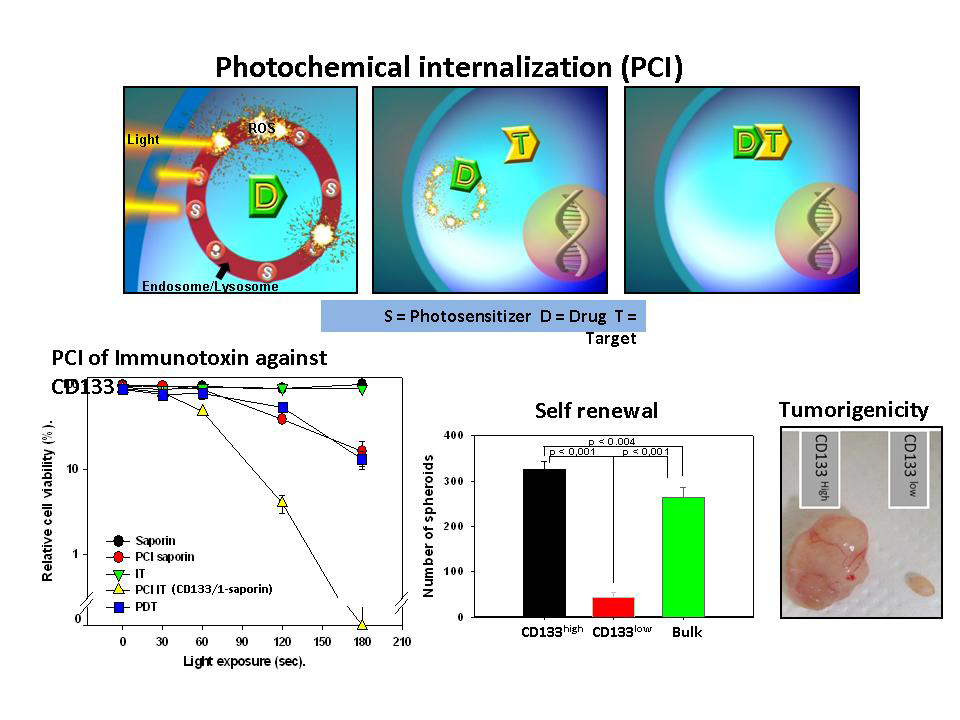Monica Bostad and co-workers publish important new findings on light-triggered targeting of stem-like cancer cells

PCI of a CD133-targeting immunotoxin was shown to be highly efficient down to femtomolar levels in cells of colorectal and pancreatic cancer origin. The uptake and intracellular localization of the CD133-targeting mAb (collaboration with the Confocal Microscopy Facility) revealed a significant co-localization with the PCI photosensitizer (TPCS2a) and Lysotracker in endo-lysosomal compartments prior to light exposure. The tumor-initiating capacity of the CD133high compared to the CD133low population were also assessed revealing that tumor- initiation and aggressive growth in athymic nude Foxn1nu mice was obtained with only 10 (ten) CD133high cells opposed to CD133low cells.
Hence, using light for time and space-controlled release of cancer stem cell (CSC)-targeting antibody-drug conjugates may provide a novel approach to eliminate local tumors while sparing distal normal stem cells.
CSCs are notoriously chemo and radiation therapy resistant and repopulate a tumor after treatment failure. PCI is a drug delivery technology based on the photochemical induced oxidation and rupture of endocytic vesicles, resulting in an endo-lysosomal release of the entrapped drugs of interest, which may react with its intracellular target. PCI is under extensive pre-clinical and clinical evaluations for the enhancement of a variety of different therapeutics. Recently, a phase ΙΙ clinical study on PCI of bleomycin was initiated at 5 different European centers.
Pål Kristian Selbo is principal investigator of the project Targeting of Cancer Stem Cells by Photochemical Internalization and is affiliated with the Cancer Stem Cell Innovation Center, PCI Biotech and the PCI-group of Kristian Berg at the Department of Radiation Biology at the Institute for Cancer Research, Norwegian Radium Hospital. The project is financed by PCI Biotech, Norwegian Research Council, Norwegian Cancer Society and the Norwegian Radium Hospital Research Foundation.
Links:
Photochemical internalization (PCI) of immunotoxins targeting CD133 is specific and highly potent at femtomolar levels in cells with cancer stem cell properties.
Bostad M, Berg K, Høgset A, Skarpen E, Stenmark H, Selbo PK.
J Control Release. 2013 Apr 6
Links to the paper from: PubMed - Journal of Controlled Release
Department of Radiation Biology
Home page of Kristian Berg's PCI group
Pål Kristian Selbo's page

